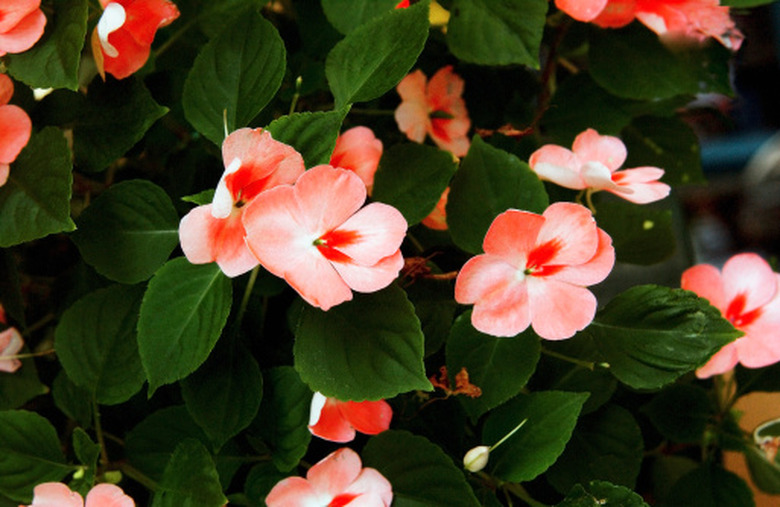How To Tell Vincas & Impatiens Apart
Vinca major and vinca minor, also known as periwinkle, and impatiens are both widely used flowering ground cover plants. Impatiens and vinca have some similarities and both are available in multiple colors of cultivars, so that one may be mistaken for the other. However, there are distinct differences between the two types of flowering ground covers. If you know what characteristics to look for, it should be easy to tell vincas and impatiens apart by making some simple observations.
Step 1
Look at the blossoms. Vinca has tubular, five-petal, blossoms under 1 inch in diameter. Vinca traditionally has lavender or blue flowers, giving it the alternative name "periwinkle," but other colors are available. Impatiens flowers are distinctly flat in shape, rather than tubular and have five rounded, overlapping petals. Due to its popularity, impatiens has been widely cultivated resulting in a huge variety of colors available, even bi-color.
Step 2
Observe the foliage. Vincas feature dark green, shiny, oval leaves with pointed ends. They are about 1.5 inches long for vinca minor and 3 inches long for vinca major. Vinca foliage roots at each node along the ground to form a dense ground cover. Impatiens leaves have an oval or elongated oval shape as well, but they are differentiated by a scalloped edge. They are generally bright green and may have a reddish tinge in some cultivars.
Step 3
Notice where the plant is growing. Vincas thrive in sun, while impatiens prefer shade. The location of the plants and how healthy they look can be a clue as to which type of flower it is.
